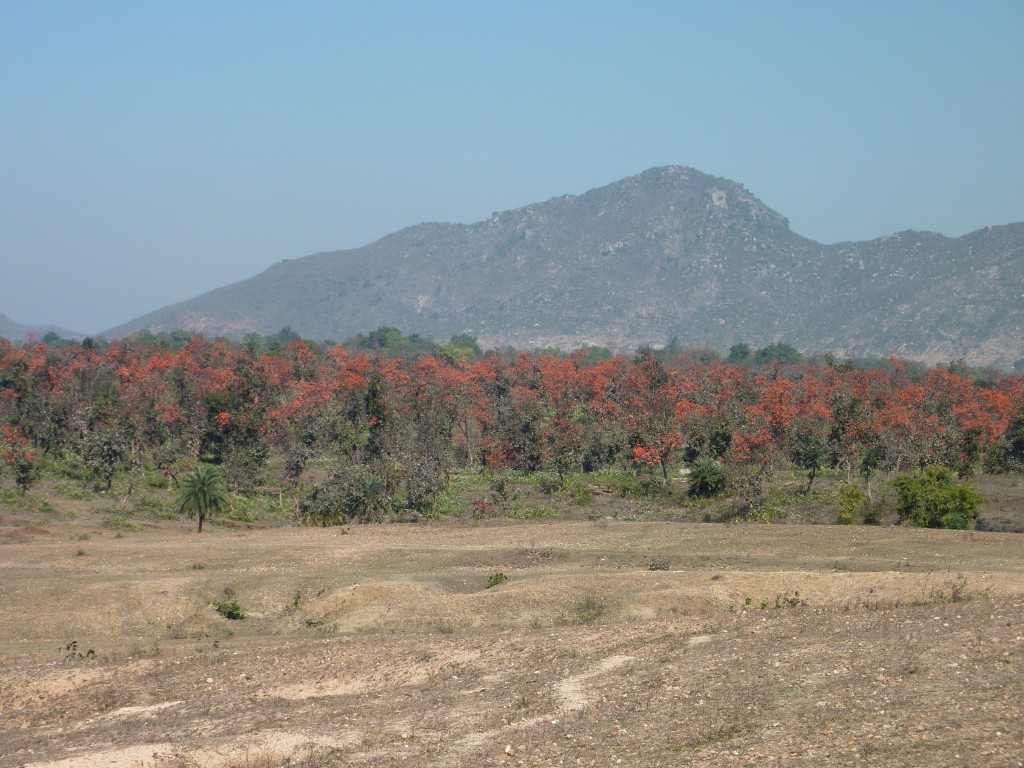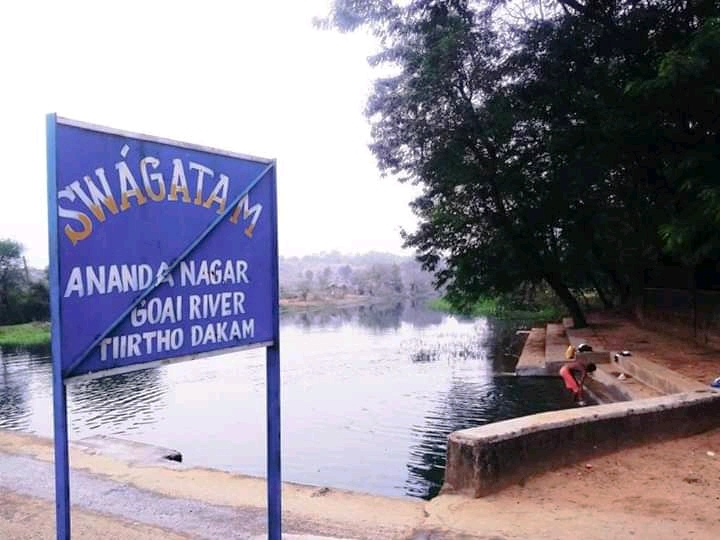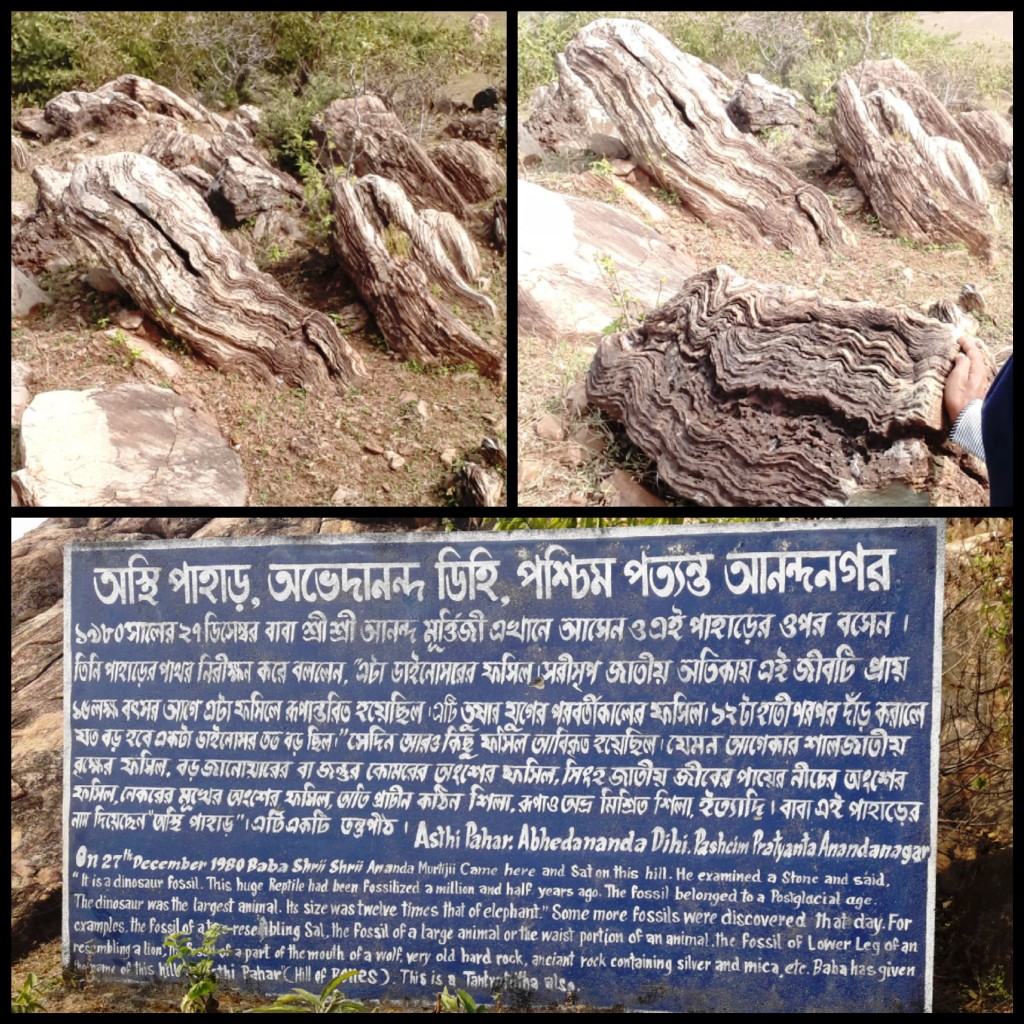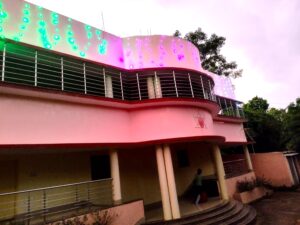Ananda Nagar is situated in the north-eastern part of India, in the heart of Rarh. It is one of the most underdeveloped regions of India, covering Purulia and the neighboring districts of Bengal, Singhbhum and the adjoining areas of Bihar and Jharkhand. However, Rarh was the starting point of civilization and was once covered by dense forests. Its villages, named Baglata (meaning abode of tigers in creepers and shrubs), Singhagra (the roaring of lions), and Dimidiha (a place covered with eggs and where Siberian birds used to lay eggs), bear testimony to that glorious past.
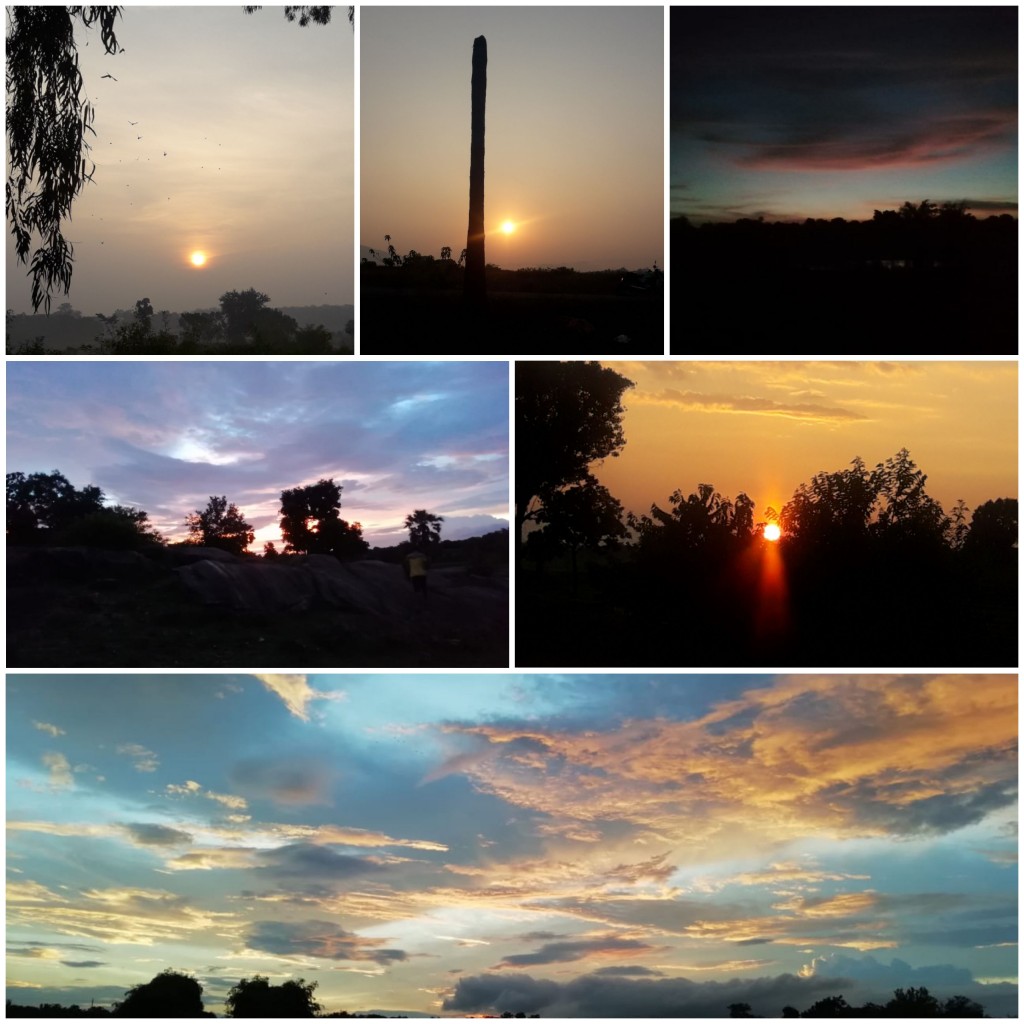
A hill stands southwest of Ananda Nagar named Asthi Pahad (Fossil Hill), which contains ancient fossils, including those of dinosaurs. The great Maharshi Kapila was born in Pat Jhalda (23 kilometers southwest of Ananda Nagar) 3,500 years ago. Maharshi Kapila was not only the first philosopher of the world but also the inventor of algebra and geometry.
Visitors arriving by train, for the first time at Ananda Nagar (served by the quaint Pundag station), are often struck by the vastness of the panorama that opens up their eyes. The landscape is composed of rolling hills, ancient rock formations and winding streams lying in the shadows of the mountain range, whose history predates to many a millennium and is still the home of rare wildlife.
Local kids play while their mothers divert the river into their rice paddies, using just rocks and their sore backs.
During the day, villagers can be seen moving serenely over the vast landscape performing the daily tasks that have been passed down in their tradition: the men driving their bullock carts to market and ploughing the fields; the women diverting the streams into their rice paddies and moving through the forests and fields collecting fuel for their kitchens and material to keep their houses in good repair.
Ananda Nagar is a land without time, a place where its sweet and mystic beauty stands as a witness for the human drama of existence. With their roots deep in a remote past, the people of Ananda Nagar struggle to find their place in the present world. Living in one of the forgotten areas of India, their lives move around basic rural activities. Most of the tiny villages lack electricity and have no clean water supply. Illiteracy is another problem that people in this area suffer from. There is yet no irrigation scheme to arrest the abundant monsoon water. A few wells, ponds, and springs are the main sources of drinking and irrigation water in Ananda Nagar. There is no substantial industry in the area, nor any established wholesale market. There are no telecommunication links, nor electricity (other than Gurukula Townships powerhouse) for all villages. There is only one functioning 36-bed hospital run by the Ananda Marga Mission, with minimal facilities for multi-pathy cure.
The nutritional and health status of the population is substandard. In fact, malnutrition, under nutrition, lack of proper hygiene, exposure to unclean water, and inadequate knowledge of preventive healthcare is the root cause of a dozen common diseases among the population. Diarrhea, malaria, dysentery, TB, typhoid, cholera, leprosy, skin diseases, chicken pox cough, polio, elephantitis are common. Infant mortality is also very high. Every year, 23 per thousand infants are born. Out of these, 25% are susceptible to diseases and die. Child mortality in Ananda Nagar is common. Those who do survive have no choice but to continue the cycle of poverty.
Ananda Nagar Development Project
Shri Prabhat Ranjan Sarkar made Anandanagar the headquarters of Ananda Marga Gurukula with a vision to establish a Gurukula University and Township. The Ananda Nagar project is in fact an attempt to build an oasis in the midst of this desert caused by human neglect and non-caring mentality and is meant to constitute a pioneering approach to tribal cultural renaissance and socio-economic development. However, even beyond that, Gurukula Univrsity is designed to be verily the site of holistic learning: of learning to gain knowledge in all spheres of human living, and of learning for enlightenment!
In order to take Ananda Nagar and its neighbouring poorest districts of Bokaro and Jharkand out of the vicious cycle of poverty, attention has first to be given to guarantee the minimum requirements of life to the people, and to provide to them socio-cultural, healthcare, employment and economic security. This entails:
1. Food Production
2. Progressive Farming
3. Alternative Renewable Energy provision
4. Education
5. Industrial development, for providing employment
6. Cultural Development for Ananda Nagar renaissance
7. Healthcare and Medical Facilities
8. Women’s Welfare: literacy, cottage industry, health and child care
Educational Projects in Ananda Nagar
As Ananda Nagar is located in one of the most impoverished and downtrodden districts of India, most students drop out of high school due to economic hardship and the literacy rate is extremely low. Shrii Prabhat Rainjan Sarkar (also known as Shrii Shrii Anandamurti) had the vision to elevate the educational status and improve the standard of living through a comprehensive system of education. Since the 1960’s primary schools and high schools were started for the local people provide education, where there were none before, and these continue to provide quality education to this day. There are also several children’s homes. Medical initiatives such as a hospital and an acupuncture clinic provide free medical support to the local residents. There is a College, a Computer Literacy Centre, and a Music College.

Ananda Marga College
In 1966, Ananda Marga College was founded at Ananda Nagar to provide higher education to the poor communities of Purulia district. Ananda Marga College is affiliated with Sidhu Kanho Birsa University and offers Bachelor degree programs in the Arts and Science, and courses in the academic areas of literature and history, physics and mathematics, chemistry and biology, Bengali and English. There are current plans to expand the Honours programs and to also develop Masters Degree programs. Currently, there are more than 500 students studying at the College. …CONTINUE READING
Ananda Marga Gurukula: Catalyst for change, through holistic education for service & development
Today, Ananda Nagar is a dreamland the dreamland for seekers for peace and tranquillity, the dreamland of educators of teachers and education-conscious students and guardians.
As Ananda Marga Gurukula develops, this prehistoric landscape will reverberate with the neohumanistic endeavours of Gurukula educators and students, to bring about all-round renaissance in the civilization of its forgotten people, through agriculture and farming, engineering and mining, healthcare and education, literature and itihasa, linguistics and fine arts, all based on the foundations of supra-aesthetic and spiritual science.
Through its Colleges, Ananda Marga Gurukula will be involved in all aspects of Ananda Nagar development: (i) from farming to environmental development, (ii) agro-industrial development and manufacture of herbal medicine, (iii) primary-to-tertiary medical care and healthcare delivery (iv) women’s welfare upliftment through education and cottage industry development, (v) community services of water supply, electrical power (with renewable energy technologies) and transportation facilities, and (vi) cooperative organization of work avenues, of management of production & distribution, (vii) education, healthcare, and employment for all.
Most importantly, the Gurukula will provide education to the young students of the region to become well qualified to take over the ongoing sustainable development of Ananda Nagar. The Gurukula Colleges and the community clinics will be located among the village communities, so as to enable the faculty and research students to inter-mingle with the community people, and make Ananda Nagar into a vibrant sustainable learning and living township.
This description of Ananda Nagar was written by Ac. Dhanjoo Ghista and first published in the Gurukul.edu newsletter of November, 2010

